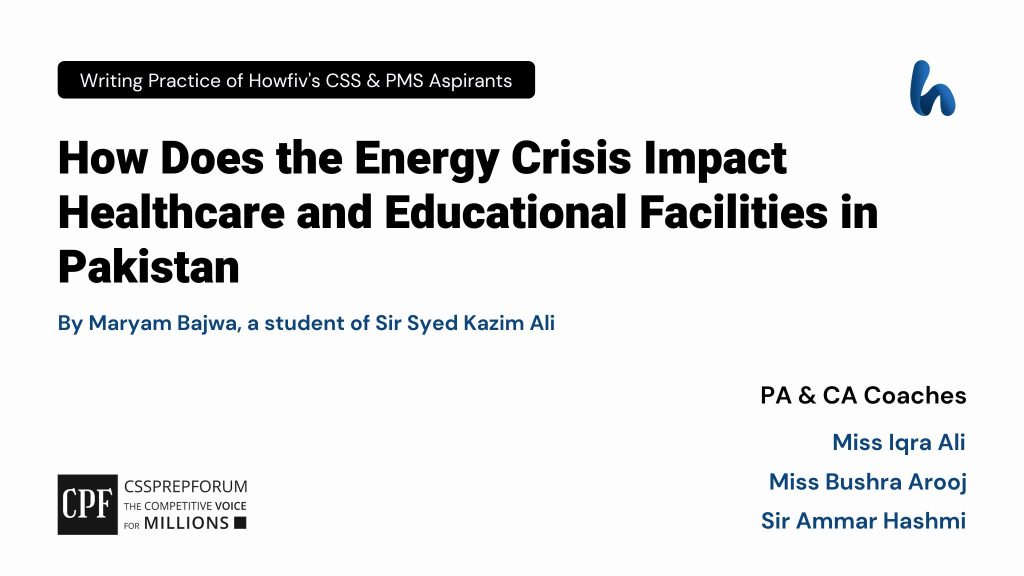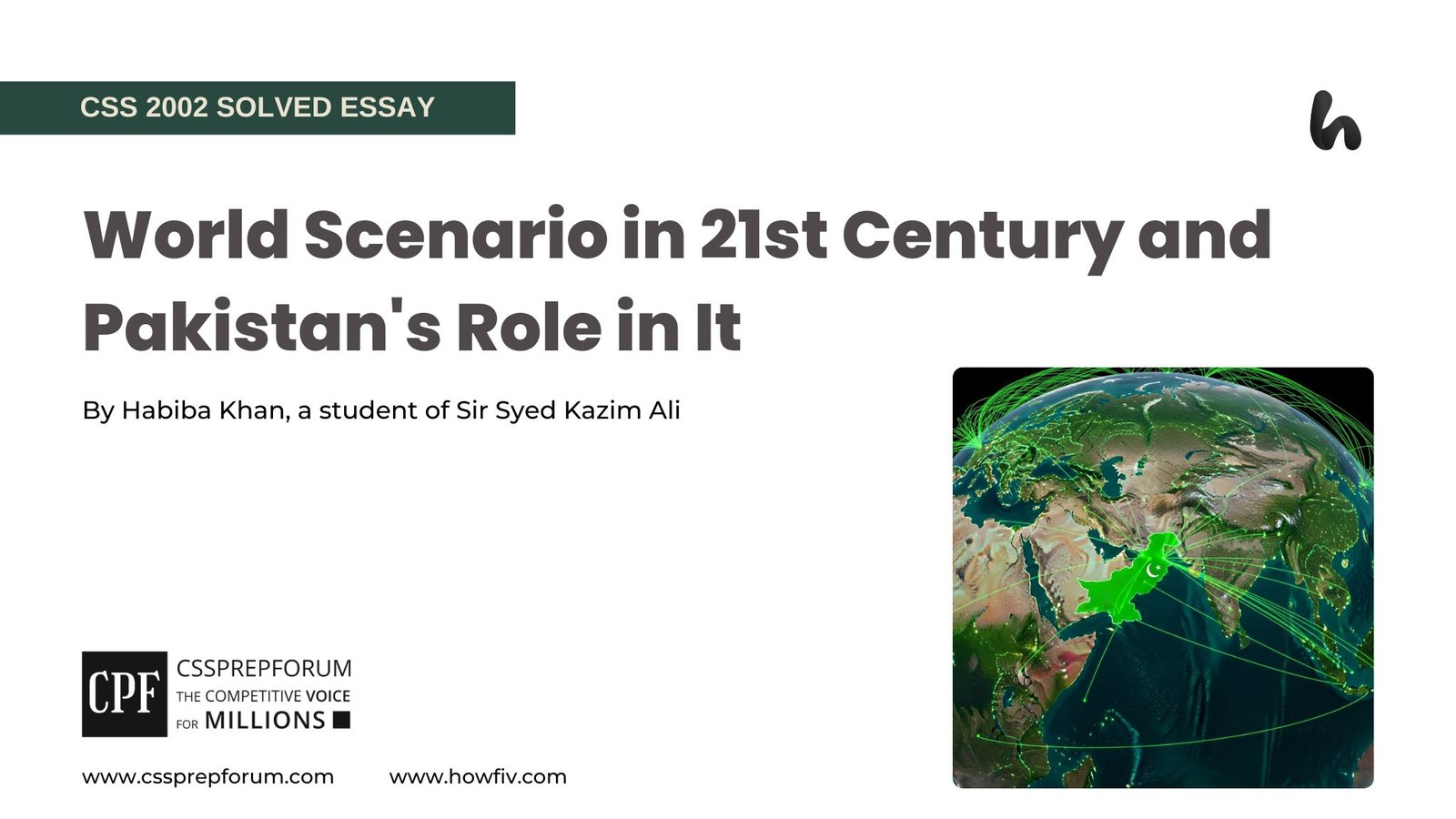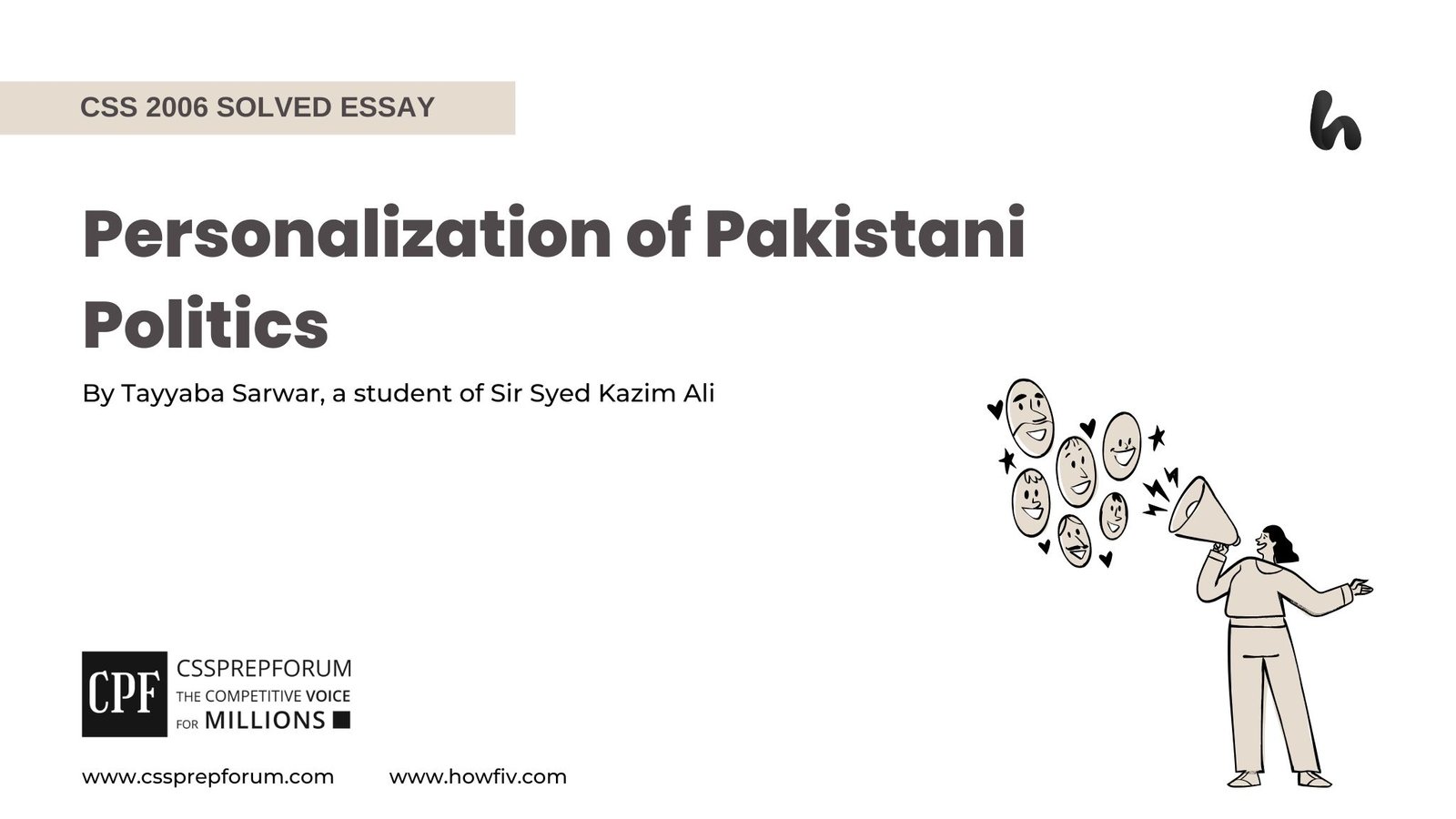CSS Current Affairs | Impacts of Energy Crisis on Facilities in Pakistan
The following question of CSS Current Affairs is solved by Maryam Bajwa under the supervision of Howfiv’s Pakistan Affairs and Current Affairs Coaches. She learnt how to attempt 20 marks question and essay writing from Sir Syed Kazim Ali, Pakistan’s best CSS and PMS English essay and precis teacher with the highest success rate of his students. This solved past paper question is attempted on the pattern taught by Sir to his students, scoring the highest marks in compulsory and optional subjects for years, and uploaded to help aspirants understand how to crack a topic or question, how to write relevantly, what coherence is, and how to include and connect ideas, opinions, and suggestions to score the maximum.

Outline
1- Introduction
2- A bird’s eye on energy crisis in Pakistan
3- How does the energy crisis impact healthcare and educational facilities in Pakistan?
3.1- Energy crisis impact on healthcare
- ✓Electricity shortfall leads to increased death rates in hospitals
- Case in point: In 2017, several deaths were reported in Karachi’s Civil Hospital due to power failures that affected ventilators and other critical equipment.
- ✓Reduce efficiency of cold chain products in hospitals
- Case in point: Insulin, measles, and polio require controlled temperature, but the increased interrupted energy supply in Pakistan affects the efficiency of these vaccines due to the unstable temperature, which decreases the efficiency of vaccines, endangering patients’ health.
- ✓Difficulty in keeping health records
- Case in point: According to sources, major hospitals in Islamabad and other cities are facing difficulties in keeping electronic health records (EHRs) up to date, as backup generators are often unable to cope with the load.
3.2- Energy crisis impact on educational facilities
- ✓Electricity shortfall disturbs the administration system
- Case in point: “The school’s record-keeping and data management systems are compromised due to frequent power cuts, putting student records and sensitive information at risk.”
- ✓Electricity shortage affects the learning environment.
- Case in point: In many developing countries, schools in rural areas do not have access to electricity, leading to inferior education services.
- ✓Shortage of Energy increases absence rate of students from schools
- Case in point: A study published in the Journal of Education and Human Development found that “energy shortages have a significant negative impact on student attendance and academic performance in Pakistan”
4- What are the pragmatic measures that the Pakistan government should adopt?
- ✓Increase reliance on renewable energy resources
- ✓More dams should be built to store water
- ✓Raise awareness about energy conservation techniques
- ✓Decrease electricity line losses
5- Critical Analysis
6- Conclusion

Answer to the Question
In the globalized world, energy demand increases with time because every sector of daily life is driven by Energy. An uninterrupted flow of Energy is essential for the country because it drives the industrial and agricultural industries and boosts its socio-economic growth. Unfortunately, in Pakistan, energy shortage is an ongoing crisis that ultimately impacts the health and education sectors. In the health sector, electricity shortfall has led to increased death rates and reduced efficiency of cold chain products in hospitals. The education sector was also affected by a shortage of Energy, which led to an electricity shortfall that disturbed the administrative system, affected the learning environment, and increased the absence of students from schools. However, there is room for betterment. The government should adopt some pragmatic measures, such as increasing energy resources, building more dams, and building more damaging electricity to decrease shell; the country faces several impacts on its various sectors due to the energy crisis. The government must control this menace as soon as possible. Otherwise, it would be drastic for the future of the country.
Pakistan is facing an acute energy crisis that creates a gap between the supply and demand of Energy, which affects Pakistan’s economy. According to the Ministry of Power Division report 2023, the country’s electricity demand is 30,154 MWs against a supply of 22,000 MWs, resulting in a shortfall of over 8,000 MWs.This shortage of Energy has increased load-shading, widening the gap between supply and demand, which put pressure on the energy sectors that have to face difficulties in meeting the demand of the industrial and commercial industries and enforce to adopt reduced work hour policy to meet the energy demand. Hence, the increasing gap between supply and demand for Energy is causing an energy crisis in Pakistan.
Moving towards the maxim, theshortage of Energy in the country increases the load-shading; sometimes, the electricity shortfall remains for one to two days, and the country’s hospital is not capable of running their system for more than a few hours. For instance, In 2017, several deaths were reported in Karachi’s Civil Hospital due to power failures that affected ventilators and other critical equipment. This shows that energy shortfall affects the chronic patient’s life, which puts their life in danger, and the conditions of severe patients who cannot survive long without medical equipment become the reason for their death. Thus, Electricity breakdown affects the patient’s health and life.
Additionally, the Increased load-shading has reduced the efficiency of hospital cold chain products. For example, insulin, measles, and polio require controlled temperature. Still, the increased interrupted energy supply in Pakistan affects the efficiency of these vaccines due to the unstable temperature, which decreases the efficiency of vaccines and endangers patients’ health. Significantly, in summer, these cold chain products are affected due to 7-8 hours of continuous load-shading, which has also reduced the efficiency of these vaccines. Thus, there is a need to find another alternative to keep these cold chain products safe.
Last but not least, the Electricity shortfall interrupts the administration system, which creates difficulty in keeping health records. According to sources, major hospitals in Islamabad and other cities need help keeping electronic health records (EHRs) up to date, as backup generators are often unable to cope with the load. This shows that patients face difficulties and delays in their reports and data due to load-shading. Electronic health records usually do not save or back up due to sudden electricity shortfalls that affect the number of patients. Hence, hospitals should have robust power backup systems to save the records.
Moving next to it towards the energy crisis impacts on the education sector, the electricity shortfall in schools disturbs the administrative system because staff continuously update records and process admissions, but due to the load-shading, they cannot work on time and face difficulties in sending admissions process forward. For instance, the school’s record-keeping and data management systems are compromised due to frequent power cuts, putting student records and sensitive information at risk. Students feel frustrated about delaying their admissions process due to frequent power cuts. Hence, frequent power cuts should be reduced for better management in schools.
Lagging down the ladder, frequent power cuts affect the learning environment of the schools, where students and teachers can not put their potential towards study due to high temperatures in the summer season and load-shading. Due to the high temperature, students often face heat stroke attacks, which affects their health. For instance, In many developing countries, schools in rural areas do not have access to electricity, leading to inferior education services. This shows that an uninterrupted flow of Electricity is essential to create a good learning environment where students put their potential towards studying and gaining knowledge. Thus, in school time, load-shading must be reduced.
Last, electricity shortfalls also increase students’ absences from school, which affects the student’s education and leads to poor examination results. A study published in the Journal of Education and Human Development found that “energy shortages have a significant negative impact on student attendance and academic performance in Pakistan.” This shows that the education sector needs to move forward due to increasing load-shading, leading to poor academic results. Hence, the government must improve educational outcomes by reducing frequent power cuts.
However, there is room for betterment. The government should adopt some pragmatic measures to overcome the energy crisis. First, the government should increase reliance on renewable energy resources like wind, solar, and hydro-power because these sources are cost-saving compared to traditional fossil fuels. The government should exempt taxes from solar plates to increase the usage of solar panels in houses. Second, the government should build more dams to store water, which can be used to generate low-cost electricity. Third, the government should raise awareness companions about energy conservation techniques that help to reduce the energy crisis. Fourth, the government should decrease electricity line loss by providing copper wire to WAPDA instead of other cables, which causes line losses due to their low-quality materials. Thus, Pakistan can overcome the energy crisis by mobilizing the public and ensuring energy-efficient practices.
Critically, Energy is the country’s backbone as it boosts the economy and creates employment opportunities. Some reports show that electricity generation worldwide heavily depends on non-renewable Energy, which contributes 70% of total generation, of which 61% comes from fossil fuels and 10% from nuclear sources. However, Pakistan is facing an acute energy crisis, which badly affects its education, health sectors, and economy. In the education sector, frequent power cuts interrupt the inducive environment. Likewise, in the health sectors, load-shading increases the rate of deaths of those patients who rely on medical machines such as ventilators and incubators.
The ongoing energy crisis in Pakistan is widening the gap between supply and demand for Energy, which badly affects its economy, industries, agriculture, education, and health sectors. Additionally, it has the worst impacts on the education and health sectors. In the education sector, frequent power cuts affect the administrative system and learning environment, leading to poorer educational outcomes. Likewise, the increased load-shading affects the hospitals’ ability to keep electronic health records in the health sector, causing delays in reporting patients who need help checking their reports from doctors and further procedures promptly. However, the government should adopt pragmatic measures to deal with this energy crisis.

CSS Solved Past Papers’ Essays
Looking for the last ten years of CSS and PMS Solved Essays and want to know how Sir Kazim’s students write and score the highest marks in the essays’ papers? Then, click on the CSS Solved Essays to start reading them.
CSS Solved Essays
CSS Solved General Science & Ability Past Papers
Want to read the last ten years’ General Science & Ability Solved Past Papers to learn how to attempt them and to score high? Let’s click on the link below to read them all freely. All past papers have been solved by Pakistan’s top CSS GSA coach having the highest score of their students.
General Science & Ability Solved Past Papers












